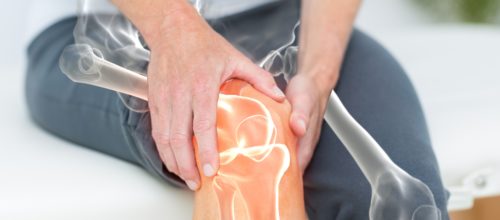
Living with Arthritis
Osteoarthritis (OA) is the most common form of arthritis and effects over 30 million people in the US alone. Worldwide, 9.6% of men and 18% of women over the age of 60 have osteoarthritis. 80% of those people have limited movement and 25% are unable to perform daily activities.
Osteoarthritis occurs when the cartilage in a joint is damaged or begins to break down, and may eventually lead to changes in the underlying bone. Signs and symptoms of osteoarthritis include pain, swelling, stiffness, and loss of function. If you have been diagnosed with arthritis you may have already begun to experience these symptoms.
Below we have highlighted some effective methods of treating the symptoms associated with arthritis and preventing progression of the disease:
Exercise
Walking and other forms of low impact exercise (swimming, cycling, Tai Chi) can help you lose weight, get your joints moving, and build muscle strength, all of which will help reduce stress on your joints. It is recommended to complete 150 minutes of exercises per week, which can be broken down into small intervals (10-30 minutes at a time) depending on your pain and fitness level. If you are new to or not accustomed to exercising, you should consult with a physical therapist. The physical therapist can make recommendations about the best exercises for your condition and teach you how to perform each exercise safely and correctly.
If stiffness is an issue in the morning, be sure to start your day with some gentle, pain free stretching and short bouts of walking to help bring blood flow/fluid to the joints.
Nutrition
Diet plays a role in the development of many chronic diseases, including diabetes, cancer and cardiovascular disease, and may also be involved in osteoarthritis. Even small changes to your lifestyle and diet could help with pain relief as well as prevent future damage associated with OA. These changes include reducing your intake of saturated fats (fats from red meats, cheese, processed foods) and replacing your fat intake with unsaturated fats from vegetable oils, nuts, and fish. Hydration is also essential to keep your joints lubricated. One recommendation is to drink approximately half of your body weight in ounces each day.
Heat/Cold
Hot and cold packs are commonly used modalities for pain relief. Generally ice is recommended for pain/swelling, while heating pads or a hot shower can be used to ease stiffness. Do not use either modality for more than 15 minutes at a time.
External Support
Shoe selection is critical to reduce the load on your hip and knee joints. Current research favors minimalist and barefoot shoes with flat, flexible soles; however, shoe selection is very unique to each individual. It is a good idea to consult with your doctor or a specialist to select the appropriate footwear based on your foot structure, co-morbidities, and gait pattern.
If you have severe arthritis and are limited with walking or exercise due to pain, it may be necessary to utilize a cane or walker to help unload your joints while you are in a weight bearing position. Your physical therapist can help you select and fit the most appropriate assistive device for your condition. Unloading braces are available and can help especially with knee OA. Bracing is also often an option for arthritis of the wrist and hand joints.
If these strategies do not help alleviate your symptoms, or you feel your symptoms are worsening, be sure to reach out to your physical therapist or physician.
References:
https://www.medicalnewstoday.com/articles/321812.php
https://www.cdc.gov/arthritis/basics/osteoarthritis.htm
